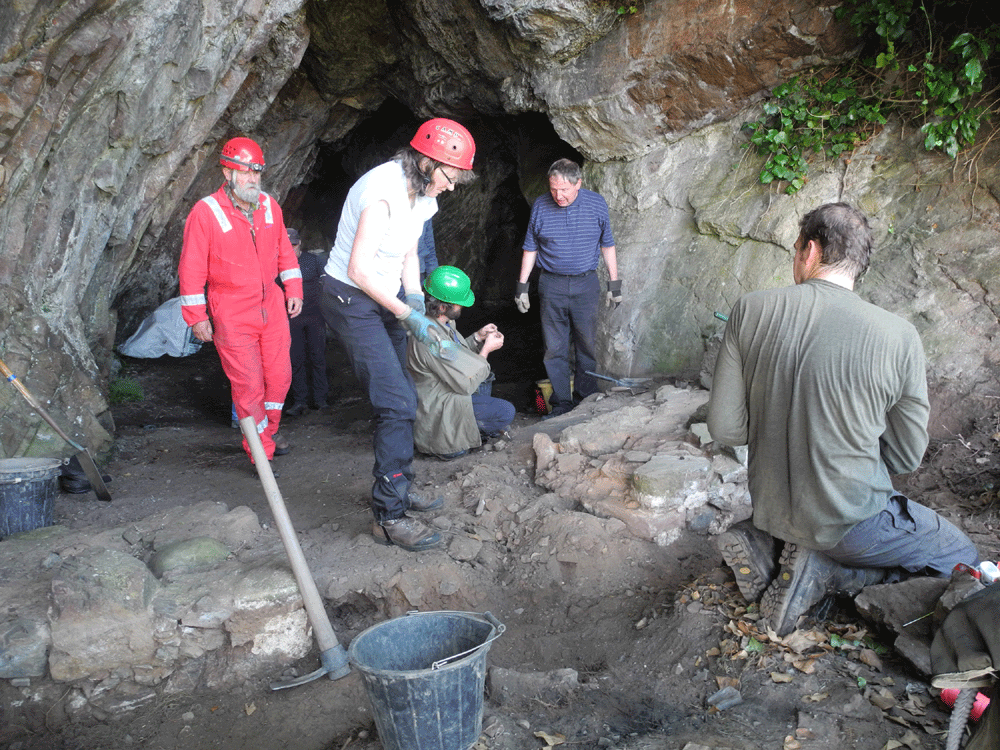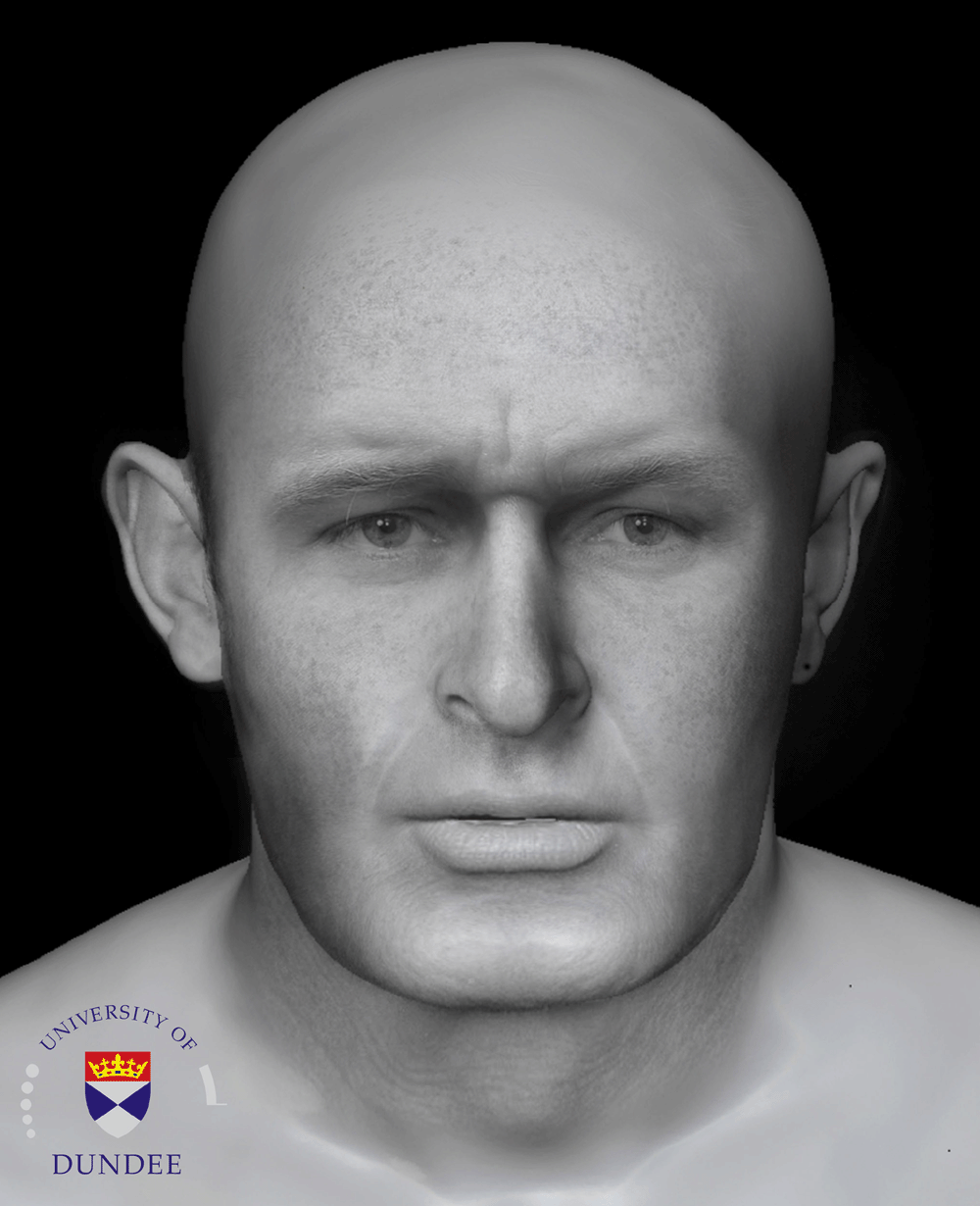RESEARCHERS have reconstructed the face of a Pictish manwho was brutally murdered in a fight 1,400 years ago.
Archaeologists excavating Smelter’s Cave in the Black Isle, Highland, were astonished to find the man’s skeleton cross-legged, with stones holding him down.
The bones were sent to Prof Dame Sue Black and her team at Dundee University’s Centre for Anatomy and Human Identification (CAHID), and they digitally reconstructed his face, identifying impacts that resulted in fracturing to the skull.
Scientists at the centre have said the man was killed by a brutal fight, where he had his jaw broken by a blow to the face and his skull fractured by a hit with a stick.

He also had a weapon driven right through one side of his skull, and out of the other side.
A bone sample sent for radiocarbon dating indicates that he died sometime between 430 and 630 A.D., commonly referred to as the Pictish period in Scotland.
Forensic anthropologist Prof Dame Black completed the reconstruction alongside Dr Christopher Rynn and several PhD students.
Black has previously worked identifying the victims and perpetrators of conflicts in Kosovo, Iraq and Sierra Leone.
She said, “This is a fascinating skeleton in a remarkable state of preservation which has been expertly recovered. From studying his remains we learned a little about his short life but much more about his violent death.
“As you can see from the facial reconstruction he was a striking young man, but he met a very brutal end, suffering a minimum of five severe injuries to his head.
“The first impact was by a circular cross-section implement that broke his teeth on the right side.
“The second may have been the same implement, used like a fighting stick which broke his jaw on the left. The third resulted in fracturing to the back of his head as he fell from the blow to his jaw with a tremendous force possibly onto a hard object perhaps stone.

“The fourth impact was intended to end his life as probably the same weapon was driven through his skull from one side and out the other as he lay on the ground.
“The fifth was not in keeping with the injuries caused in the other four where a hole, larger than that caused by the previous weapon, was made in the top of the skull.”
The skeleton was discovered when a team of volunteers were digging to determine when the cave might have been occupied.
Below substantial layers relating to cave-use since the turn of the 20th century, they found evidence that the cave had been used for iron-smithing during the Pictish period.
Excavation leader Steven Birch said, “Having specialised in prehistoric cave archaeology in Scotland for some years now, I am fascinated with the results.
“Here, we have a man who has been brutally killed, but who has been laid to rest in the cave with some consideration –placed on his back, within a dark alcove, and weighed down by beach stones.
“While we don’t know why the man was killed, the placement of his remains gives us insight into the culture of those who buried him. Perhaps his murder was the result of interpersonal conflict; or was there a sacrificial element relating to his death?”
A number of small test-pit excavations of caves in the area over the last few years have provided evidence that they were being occupied from 1,500-2,000 years ago.
The cave excavation has also provided information about the more recent past, including objects left behind by occupants and temporary travellers living inside the cave 200 to 300 years ago.
Evidence from this later period suggests that the inhabitants were making, or repairing, leather shoes, possibly for distribution to local communities on the Black Isle.
Ongoing analysis on the skeleton and artefacts from the cave is expected to provide more details of the man’s place of origin and significance.


